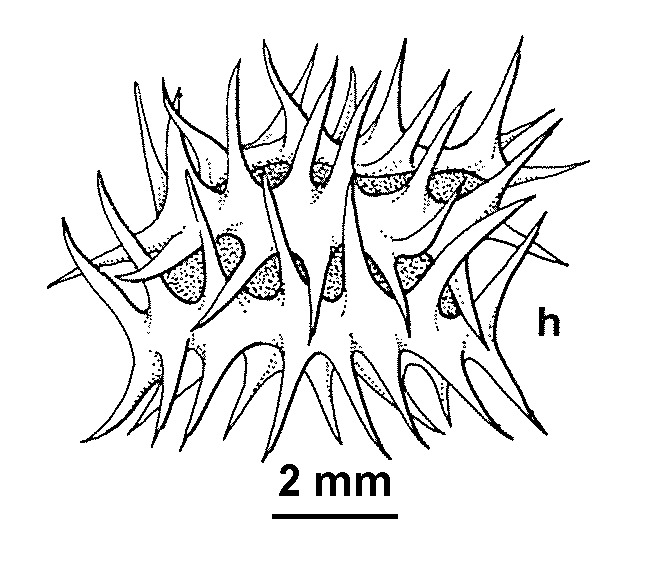Medicago laciniata var. laciniata
Cut-leaf MedicProstrate or ascending annual herb; stems 15–40 cm long, sparsely hairy; hairs simple. Leaflets obovate to obcordate, 3–15 mm long, 2–10 mm wide, deeply laciniate, upper surface glabrous, sometimes with darker flecks, lower surface sparsely appressed-hairy, apex truncate or emarginate with a broad terminal tooth; stipules to c. 5 mm long, deeply laciniate, hairy on lower surface. Inflorescence 1–3-flowered; peduncle 1–2 cm long, mostly longer than subtending petiole. Pedicels to c. 1 mm long; calyx 2–4 mm long, teeth shorter than tube; corolla yellow; standard 4.5–6 mm long; wings shorter than keel. Pods mostly with 5–7 coils, spherical or ovoid, 3–8 mm long, 3–6 mm diam., glabrescent, spiny; coil edge thin; face with 6–16 sigmoidal veins; veins anastomosing; marginal vein raised above level of submarginal veins; groove narrow, not visible from edge; spines 8–16 on each side of coil, 0–6 mm long; seeds 7–14, to c. 3 mm long, yellow-brown. Flowers Jul.–Nov.
LoM, MuM, Wim, VVP, VRiv, RobP, MuF. In Victoria, apparently confined to the far north-west in clay and loam soils mainly on disturbed ground and along road verges.
Var. brachyacantha Boiss. differs in having dentate leaflets and stipules, peduncle equal to or shorter than subtending petiole, pod short-cylindric with 2.5–4.5 coils and spines of variable length (Heyn 1963). Some later authors (e.g. Wiersema et al. 1990, Small & Jomphe 1989) do not recognize varieties of M. laciniata.
Jeanes, J.A. (1996). Fabaceae. In: Walsh, N.G.; Entwisle, T.J., Flora of Victoria Vol. 3, Dicotyledons Winteraceae to Myrtaceae, pp. 663–829. Inkata Press, Melbourne.
 Spinning
Spinning